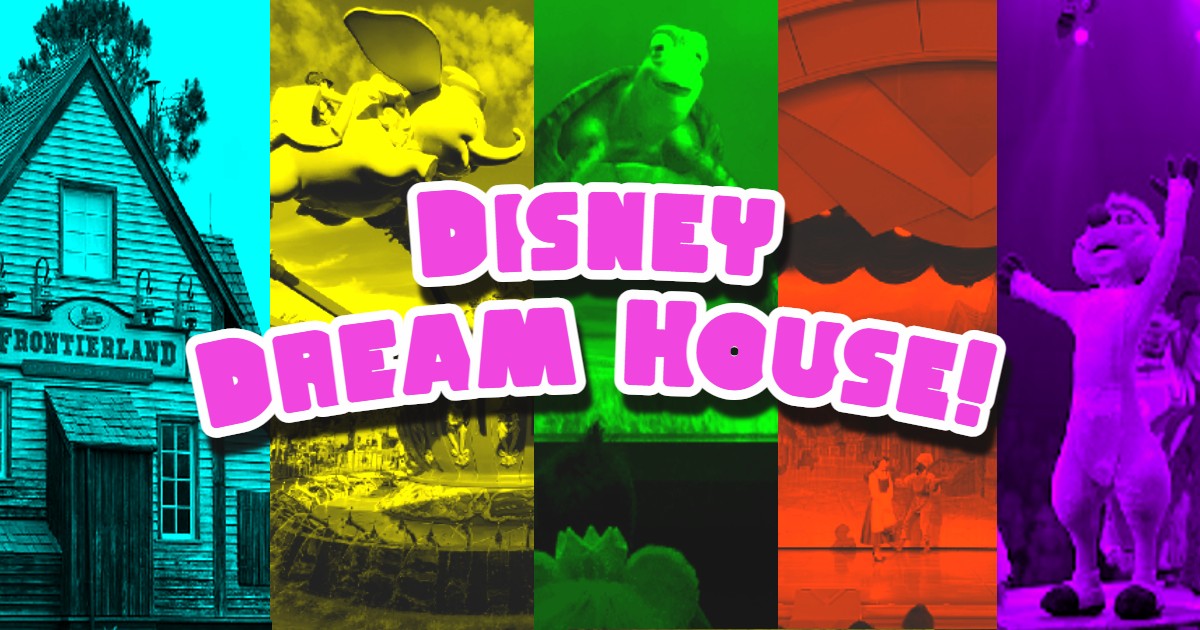
With a few exceptions, theme park attractions aren’t built in tents. The tentpole attractions (sorry) get their Disney dream house in the form of beautiful brick-and-mortar show buildings.
Whether it’s a haunted hotel on the dark side of Hollywood or a glistening geodesic sphere, once you move into these digs, you aren’t moving out. At least, not without a court order and a high-powered divorce lawyer.
But let’s be honest. Not every ride is a trust fund kid. Sometimes, it has to earn its chops.
There’s an old corporate saying. Dress for the job you want, not the job you have. Sure, you have your ladder climbers. Ambitious rides who just can’t wait to move on to the next big thing. Some of these guys are just glorified hatchet men. They fly in, gussy up some unattractive little corner of the part with some big-name star power, and then dash away in search of the next big paycheck.
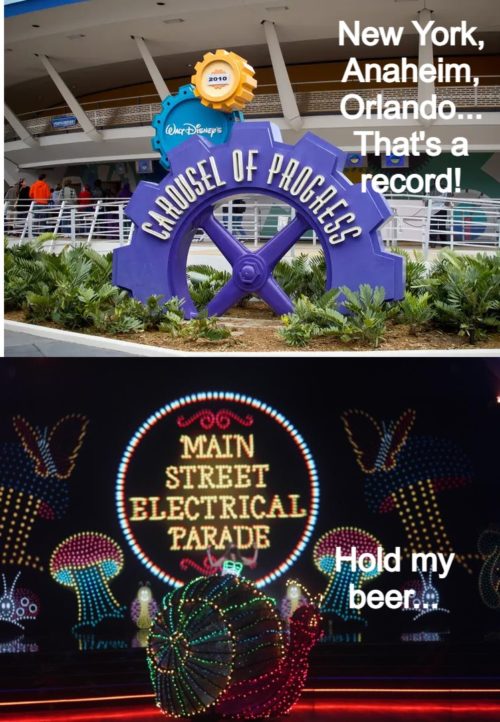
But every now and then, you catch the little guy on his way up.
With the right set of circumstances, a little patience, and a whole lot of little-engine-that-could determination, these five attractions were able to flip their modest starter home into a Disney dream house all their own.
And unlike Mr. Main Street Electrical Parade up there, they didn’t even have to leave the park to do it.
#1 Turtle Talk With Crush
It’s hard to fathom (Seas joke), but Turtle Talk with Crush is one of the most duplicated Disney attractions in the world.
It was originally created for Epcot in 2004. Since that time, copies have been installed into Disney California Adventure, Tokyo DisneySea, Hong Kong Disneyland, and a couple of the Disney Cruise Line ships. It even has the distinction of being the only attraction installed outside of a Disney location. A version was created specifically for the Children’s Hospital of Orange County.
But long before it became a global phenomenon, Turtle Talk was just a simple showcase of some pretty nifty technology injected into Epcot’s Living Seas pavilion. The show is a hybrid of scripted scenes and real-time interactive CGI puppetry. And its sole purpose was to give the stagnating Epcot something — anything — that resembled Disney characters.
The original Living Seas was on its last sea legs. The SeaCab ride had already been dark for a long time. The beloved Hydrolators were weeks away from closing for good. The Nemo dark ride wouldn’t open for another year. So this little technology demonstration was hastily installed into one of the Seabase Alpha antechambers known as 1C (Hmmm, another “Sea” joke).
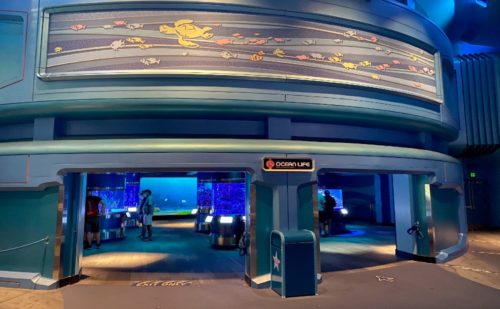
Crush Moves to His Disney Dream House
Wait a minute, you might say. Isn’t that where Turtle Talk still lives today?
Actually no. When it first opened, Turtle Talk operated out of the chamber adjacent to the manatee exhibit. When its popularity started to cause a crowd control problem, a larger theater was commandeered.
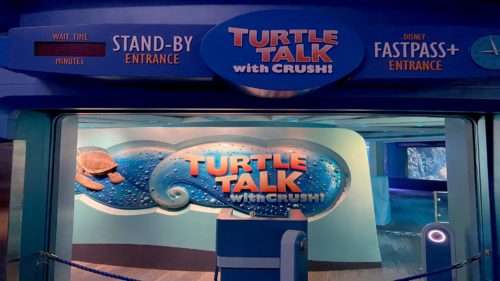
Namely, the old preshow for the original Living Seas.
Yes, Crush now says “Dude” several thousand times each day in the same theater where it rained… and rained… and rained… The Deluge. And if you don’t get that reference, you have never experienced the true EPCOT.
His old theater is still around. But now the bench seating is all gone. Today it houses several wonderful little aquariums full of Nemo-esque sea life. And against the back wall, a large window looks out into a coral reef. Really, it’s Crush’s old video screen. Be sure to look for it. The average guest will have no clue of its historical significance.
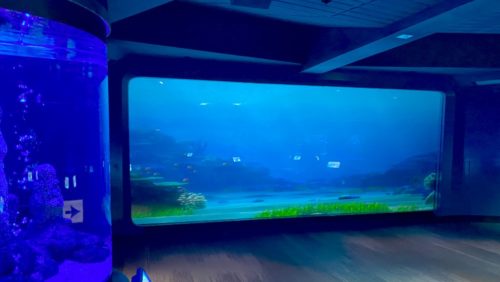
#2 Frontierland Railroad Station
Sometimes life is a hardscrabble struggle for survival on the wilds of the American frontier.
And sometimes a prospector finds gold and the place becomes a boom town.
When the Walt Disney World Railroad opened with the Magic Kingdom in 1971, it had only 2 stops. Main Street, U.S.A. and Frontierland.
A railroad station in Frontierland is a natural. Disneyland had one going back to 1955. But in the early days of the Magic Kingdom, there wasn’t much happening in Frontierland. The main thoroughfare had the the Diamond Horseshoe and the Country Bears — all riverfront property to the Rivers of America.
But to the West, there was a whole lotta nothin’. Just that train station at the end of the street.
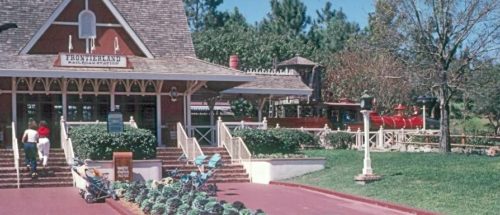
Remember, this was even before Caribbean Plaza showed up in Adventureland. And long before any Disney mountain ranges. But still the Walt Disney World Railroad would stop several times a day, dropping off passengers to explore this little ghost town before continuing on into the wilderness.
Big Thunder Mountain would arrive nearly a decade later, finally turning the back corner of the Magic Kingdom into E-ticketland. But the Frontierland Railroad Station kept its modest digs. Just a simple platform with a plain shingled roof.
Splash Mountain Upgrades Frontierland Station to Its New Disney Dream House
In the early 1990s, Splash Mountain sunk a well and struck a geyser of black gold, Texas Tea. Actually, no, it was just water. Enough to drastically alter the Frontierland landscape.
With two massive Disney mountains side-by-side, the Frontierland Railroad Station needed an upgrade. The original station and its water tower were completely demolished and sealed off behind the berm. Today, the backstage parade route literally runs straight through the spot where the station once stood, entering Frontierland at nearly the exact same point where those early passengers used to disembark.
A new Frontierland Station was built on a trestle jutting out of Splash Mountain — complete with a weathered barn look that is far more rustic and exciting than anything the original station could ever hope to muster. The train even enters the station straight from a dark tunnel that allowed an unprecedented look into the new ride’s grand finale.
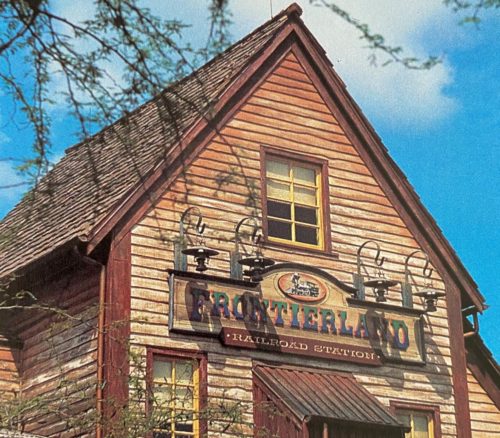
#3 Dumbo the Flying Elephant
For decades, Disney World had one of the worst incarnations of Dumbo around.
Now it is the best.
Dumbo used to hang out directly behind the Carousel. Its basic fleet of flying pachyderms awkwardly circled a concrete ditch, surrounded by tired circus-tent awnings to cover the massive queue from the sweltering sun. Aside from Dumbo/Dumbos himself/themselves, an animated Timothy Q. Mouse centerpiece functioned as the only real attempt at theming, for what was otherwise a standard carny flat ride.
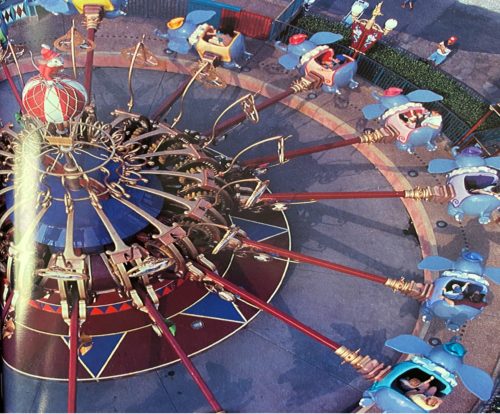
Yet Dumbo always had a nightmarish line. This was in part because it’s the Disney equivalent of a gateway drug for the toddler set. It’s the only ride to appear in all 6 Disneyland-style parks. It’s highly likely that your very first Disney ride was Dumbo the Flying Elephant. He’s colorful, adorable, and recognizable. That makes him the perfect introduction to the Disney experience for little kids, before you hammer them later in the day with ghosts and pirates.
But the biggest problem is his capacity.
They later learned their lesson with similar rides like the Magic Carpets or Triceratop Spin. Those rides featured two rows, allowing each vehicle to accommodate 4 or 5 riders. Dumbo only had a single bench seat on each of its 10 elephants (later increased to 16). So if your family of six wanted to ride, you effectively took up a third of the ride’s capacity.
A Circus Big Top Dream House
When Fantasyland expanded in 2012, the original Dumbo location was demolished to make way for those faux castle gates that marked the entrance to the new area. But of course, the baby elephant was too much of a Disney tradition to get rid of entirely.
So instead, they built an entire new mini-land around him and called it Storybook Circus.
Hoping to solve the capacity problem, they constructed two copies of the same ride. One spins clockwise and the other counter-clockwise. An air-conditioned circus playground with a pager system was added between the two ride systems, giving kids the chance to burn off energy without being trapped in a sweltering, slow-moving line. And for good measure, they added FastPass (now Lightning Lane). All it needs now is that magic feather from the Disneyland version.
It might have been overkill. Dumbo went from being one of the longest lines on property to one of the shortest. The Dumbo playground is rarely used and Lightning Lane reservations are laughably easy to come by.
Nevertheless, Dumbo’s new Disney dream house is palatial compared to his old home. The ride mechanism is ornate, with wonderful decorative touches like Mrs. Jumbo and Mr. Stork from the movie. And he now flies over a fanciful water-filled moat, which is especially pretty at night, when it is lit with an LED array.
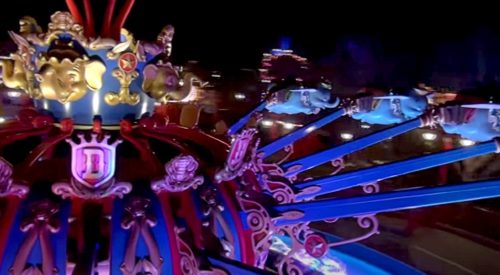
#4 Theater of the Stars
When the Disney MGM Studios opened in 1989, it did its best to bring Hollywood to Florida. The Chinese Theater became the park’s icon. The Earffel Tower was inspired by the original Walt Disney Studios water tower in Burbank. And the Mickey-topped Crossroads of the World was a recreation of the first outdoor shopping mall in America.
One of the park’s most recognizable Hollywood landmarks was (and still is) a recreation of the Hollywood Bowl, a famous amphitheater in Southern California. Disney used it as a performance space. In the park’s early history, its most famous spectacle was the Dick Tracy Diamond Double Cross show. Then it was replaced with Beauty and the Beast Live on Stage to coincide with the 1991 release of that film.
The original Theater of the Stars used to be just off the end of Hollywood Boulevard. In fact, it was contained in the right ear of the largest Hidden Mickey on property. On you could only see if you were viewing Disney MGM Studios from hundreds of feet in the air.
Or if you had a copy of the guidemap.
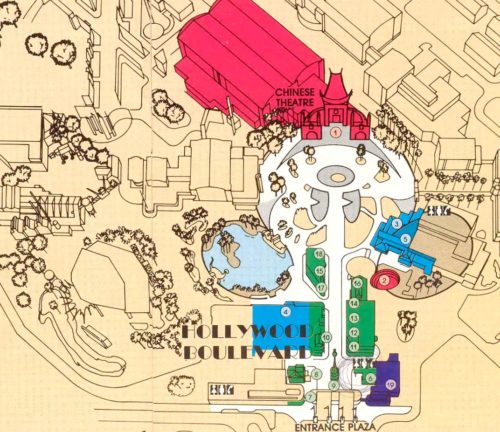
Sun Sets on the Original Theater of the Stars, Rises on Disney Dream House
That giant Hidden Mickey didn’t last very long. Neither did the Theater of the Stars. The new park needed to expand, which meant the addition of an entire side street called Sunset Boulevard. It cut straight through Mickey’s right ear, obliterating the original Hollywood Bowl replica.
But Sunset Boulevard kept the Hollywood motif going, dropping in recreations of the Carthay Circle theater and the Sunset Ranch Market. And somebody decided that the Hollywood Bowl was way too iconic to just get rid of completely.
So they built another one, just a hundred yards down the street from the original. While the show within it still feels like a placeholder (despite Beauty and the Beast Live On Stage now entering its fourth decade of mediocrity), the dream house version of Theater of the Stars should endure for years to come.
#5 Festival of the Lion King
Speaking of impermanence…
The Festival of the Lion King was total filler from Day One at Animal Kingdom. The entire Camp Minnie-Mickey land was done on the cheap, just a stopgap until Beastly Kingdom could be built.
Using performance elements borrowed from Cirque du Soleil, such as a fire twirler, tumble monkeys, and aerial tricks, Disney hastily threw together a little show based on music from the Lion King. This was during the time when the company was shoving Lion King into literally every corner it could think of. The most elaborate show elements were giant puppets of Simba, Pumba, and an Elephant — all of which were just recycled Disneyland parade floats.
Somehow, they caught lightning in a bottle.
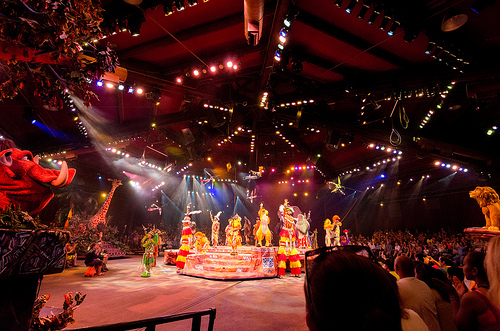
Animal Kingdom frankly didn’t have much on opening day. The Safari was great. Countdown to Extinction was hit-or-miss for some guests (we vote “hit”). And the Discovery River Boats, well, the less said about them the better.
This allowed Festival of the Lion King to swoop in out of nowhere like an undrafted rookie and electrify the league. It shot to the top of the charts, quickly becoming the number one rated show on property. The original theater — little more than a theater-in-the-round with a roof over it had to be enclosed and air conditioned to accommodate more performances.
Then along came Pandora. Suddenly, Festival of the Lion King was a hot show with an expiring lease.
Festival of the Lion King Rescued by Disney Dream House Theater
It all worked out perfectly.
A show featuring African animals and African-inspired costumes never belonged in a land themed to North American summer camps. It might have belonged in a placed called, oh I don’t know, Africa.
Turns out Animal Kingdom already had such a place. And they rolled out the red carpet for Festival of the Lion King.
The Harambe theater district constructed a brand new permanent theater for the show back in 2014. The area blends seamlessly into the existing Harambe architecture, provides dedicated queue space, and its own planned Lightning Lane entrance.
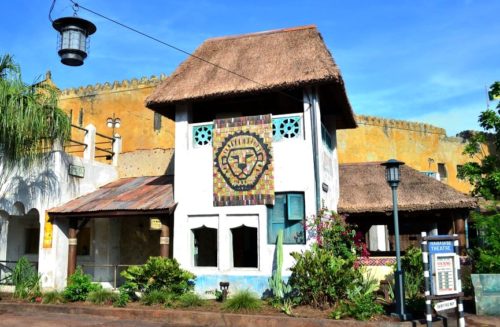
There are even ancillary facilities nearby. A new restroom complex along the riverfront and a Lion King gift stand.
Festival of the Lion King now has the Disney dream house that it should have had from Day One.

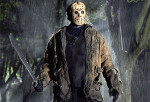


Great stuff as usual